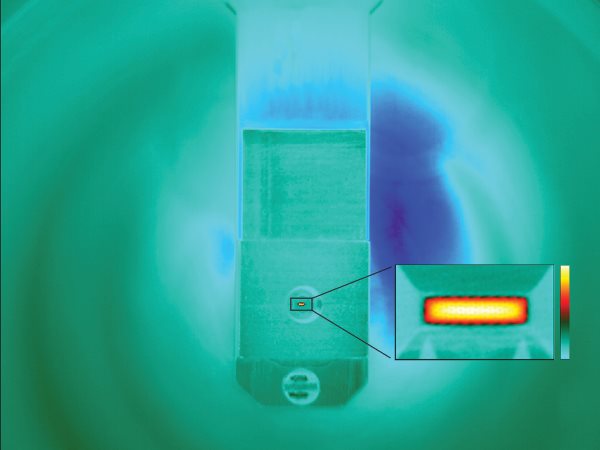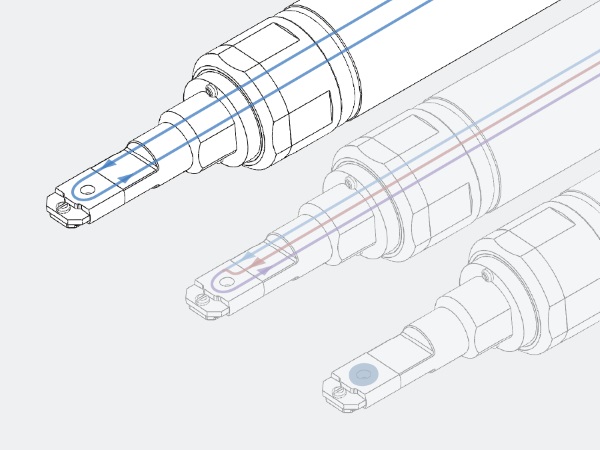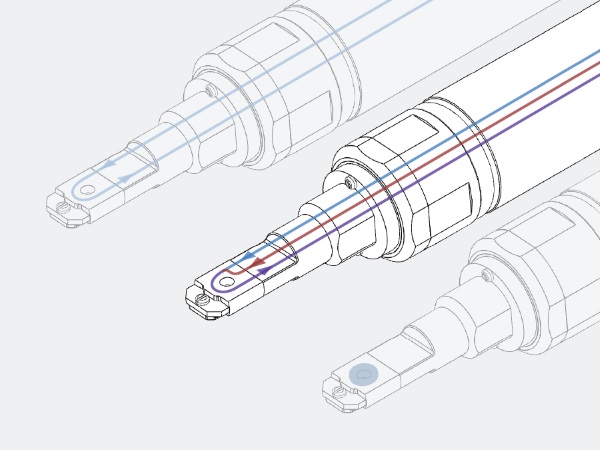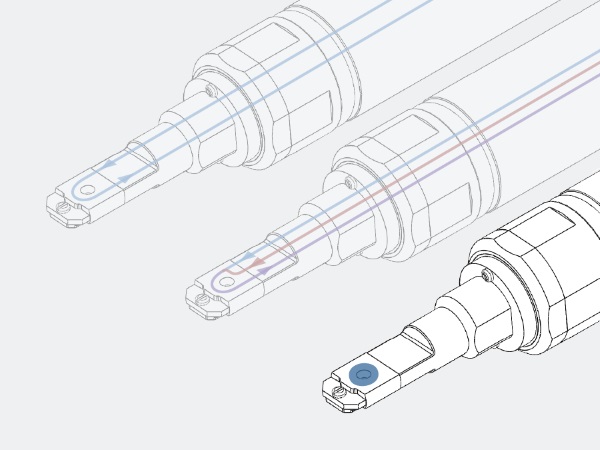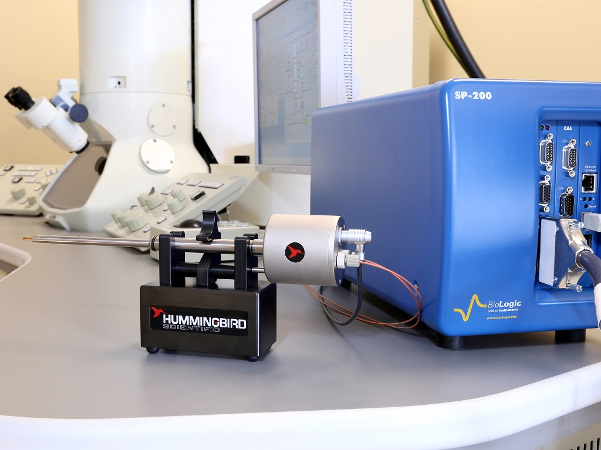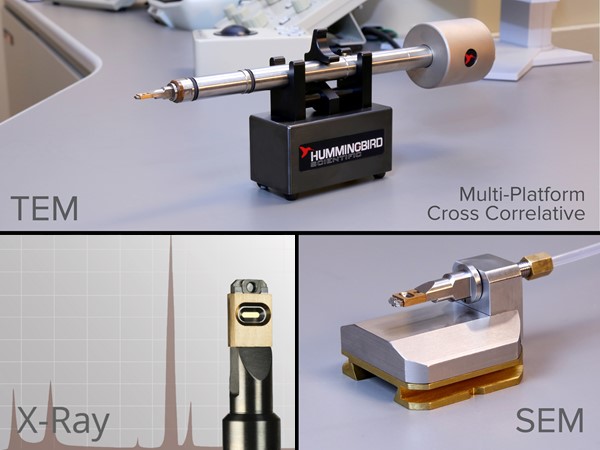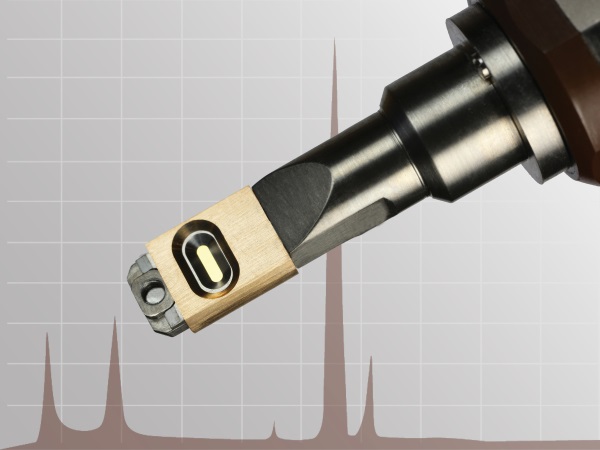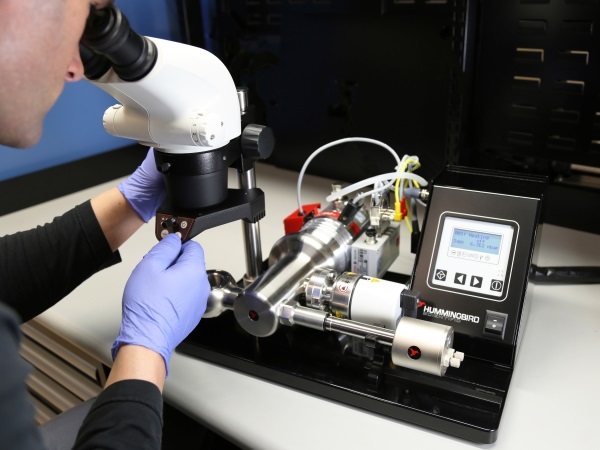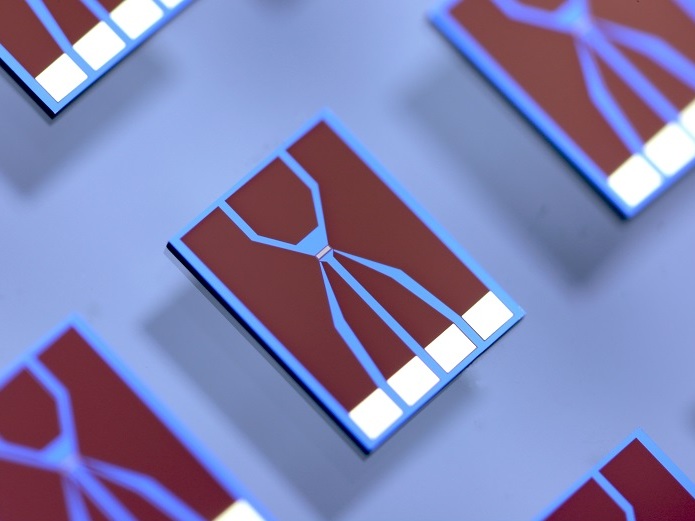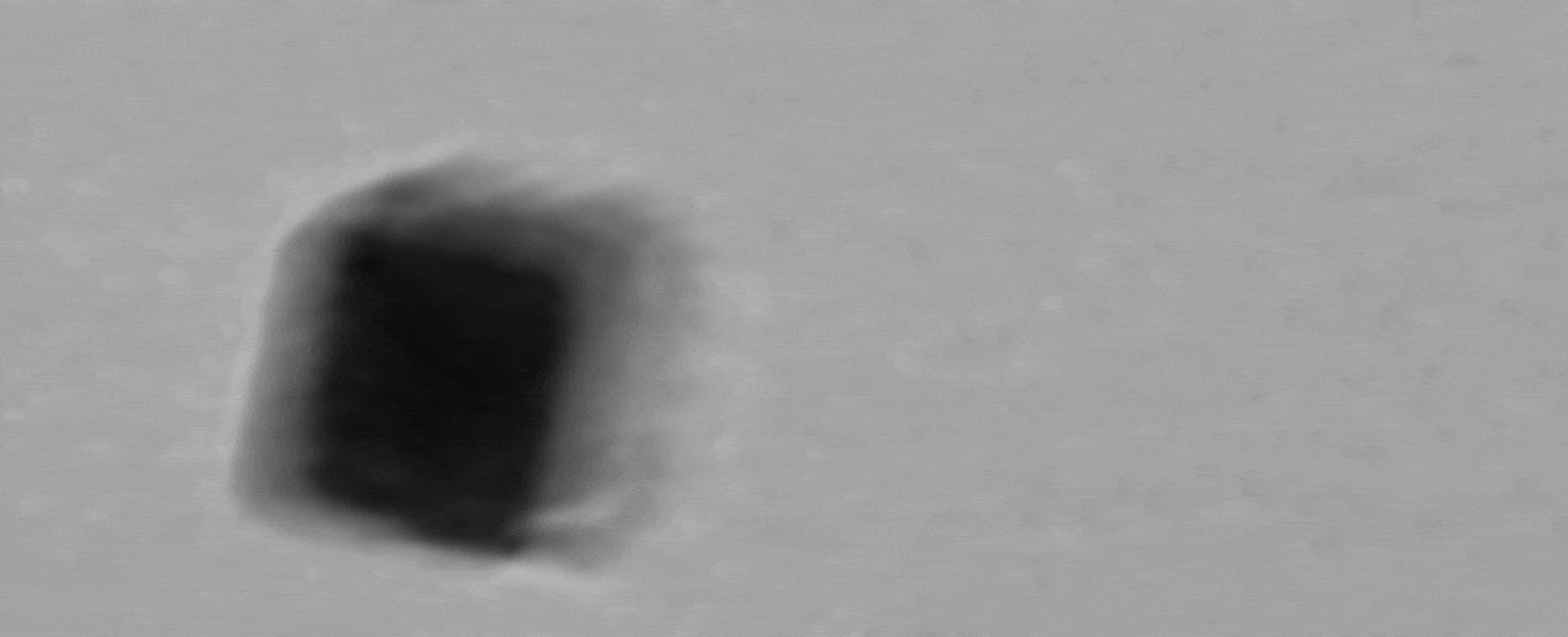

Liquid Heating

| 1400 Series | |
| Number of Inlets | 1 or 2 depending on model, single outlet |
| Biasing Contacts | 4 |
| Tubing Type | User-replaceable microfluidic tubing |
| Delivery System | Variable speed liquid delivery system |
| Tip Type | Removable tip |
| Flow Type | Continuous flow or static liquid |
| EDS Compatible | Yes |
| TEM Compatibility | TFS/FEI, JEOL, Hitachi, Zeiss |
Direct visualization of compartementalization in adaptive microgels
Researchers at RWTH Aachen University, DWI − Leibniz-Institute for Interactive Materials and theHelmholtz-Zentrum Berlin für Materialien und Energie have visualized compartementalization in adaptive microgels using liquid-heating TEM. Compartmentalization in soft materials is important for segregating and coordinating chemical reactions as well as sequestering (re)active components. The authors show the direct visualization of different compartments within adaptive microgels using a combination of in-situ electron and fluorescence microscopy. By acquiring an unprecedented levels of structural details they address the challenge of reconstructing 3D information from 2D projections for nonuniform soft matter as opposed to monodisperse proteins. They also show the thermally induced shrinkage of responsive core–shell microgels in water. Applying the methods used in this work more broadly open doors for in-situ studies of soft matter systems and their application as smart materials.
Reference: Arjan P. H. Gelissen, Alex Oppermann, Tobias Caumanns, Pascal Hebbeker, Sarah K. Turnhoff, Rahul Tiwari, Sabine Eisold, Ulrich Simon, Yan Lu, Joachim Mayer, Walter Richtering, Andreas Walther, and Dominik Wöll. “3D Structures of Responsive Nanocompartmentalized Microgels,” Nano Letters (2016)
Abstract
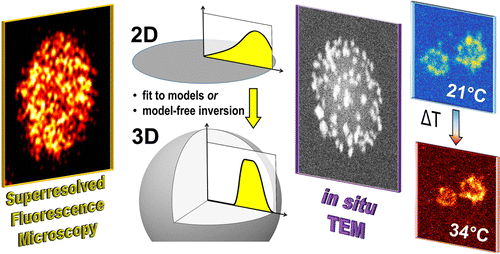
Copyright © 2016 American Chemical Society
Nanoscale galvanic replacement reactions of Ag nanocubes
Liquid Heating platform was to observe the nucleation, growth, and coalescence of voids inside the nanocubes during the GR reaction with Au ions at different temperatures. In the experiment, the nanocube solution was drop-casted onto the heater chips and sealed in the liquid holder using the bottom spacer chips. The Ag nanocubes were heated to a desired temperature before flowing the solution. The Ag nanocube studied were stable and remained in cuboid shape after heating at ~ 90 degree Celsius during imaging.
Left: Movie showing the morphological evolution of Ag nanocubes during galvanic replacement reaction at 23°C.
Reference: See Wee Chee, Shu Fen Tan, Zhaslan Baraissov, Michel Bosman & Utkur Mirsaidov. “Direct observation of the nanoscale Kirkendall effect during galvanic replacement reactions,” Nature Communications (2017). Abstract
Video Copyright ©2017 Macmillan Publishers Limited, part of Springer Nature
Top page banner: detail of Video Copyright ©2017 Macmillan Publishers Limited, part of Springer Nature
Edit| Shu Fen Tan, Geeta Bisht, Utkarsh Anand, Michel Bosman, Xin Ee Yong, and Utkur Mirsaidov. “In situ Kinetic and Thermodynamic Growth Control of Au-Pd Core-Shell Nanoparticles.” Journal of the American Chemical Society (2018) | Abstract |
| Jeung Hun Park, Tommy Watanabe, Ainsley Pinkowitz, David J. Duquette, Robert Hull, Daniel A. Steingart and Frances M. Ross. “In situ EC-TEM Studies of Metal Thin Film Corrosion in Liquid Solutions at Elevated Temperatures.” Microscopy & Microanalysis (2018) | Abstract |
| See Wee Chee, Shu Fen Tan, Zhaslan Baraissov, Michel Bosman & Utkur Mirsaidov. “Direct observation of the nanoscale Kirkendall effect during galvanic replacement reactions,” Nature Communications (2017) | Abstract |
| Arjan P. H. Gelissen, Alex Oppermann, Tobias Caumanns, Pascal Hebbeker, Sarah K. Turnhoff, Rahul Tiwari, Sabine Eisold, Ulrich Simon, Yan Lu, Joachim Mayer, Walter Richtering, Andreas Walther, and Dominik Wöll.”3D Structures of Responsive Nanocompartmentalized Microgels,” Nano Letters (2016) | Abstract |
Read More

